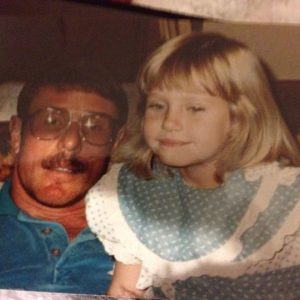Written by: Kiki Jones
PR and Media Manager
Grief is heavy, consuming, and often isolating. When we lose someone we love, the idea of feeling gratitude may seem impossible—maybe even offensive. What is there to be grateful for when someone we love is gone? And why would we even need to feel gratitude in the midst of such deep pain?
Nancy McCranie, Director of Volunteer and Bereavement Services for Hospice Austin, offers an important perspective:
“It’s not about being grateful for the loss but using gratitude as a tool to help ease the burden that the loss has caused.”
Gratitude, in this sense, is not about forcing ourselves to be thankful for something we don’t feel. Instead, it’s about allowing gratitude to exist alongside grief, making space for moments of light within the darkness.
What Does Gratitude in Grief Look Like?
For many, the word “gratitude” can bring up memories of being told we should be thankful for something, even when we didn’t feel like it. But the kind of gratitude we’re talking about here isn’t an obligation; it’s a feeling that can develop naturally over time.
After a loved one dies, it’s common to feel like there is nothing to be grateful for. Many families we’ve supported at Hospice Austin have asked, “What do I have to be grateful for?” I understand that feeling deeply.
 When my father was killed in 2007, my grief was so immense that I had no room for gratitude. In fact, when people extended kindness to my family, it sometimes made me even angrier. It took a years before I could recall memories of my dad without being overwhelmed by pain and resentment. I carried shame, thinking I should have been able to “get over it” by then. But grief doesn’t work that way.
When my father was killed in 2007, my grief was so immense that I had no room for gratitude. In fact, when people extended kindness to my family, it sometimes made me even angrier. It took a years before I could recall memories of my dad without being overwhelmed by pain and resentment. I carried shame, thinking I should have been able to “get over it” by then. But grief doesn’t work that way.
Over time, I realized that my grief was never going to disappear. I wasn’t going to “move on” from it, but I could learn to carry it differently. That meant allowing space for other emotions, like joy, laughter, and yes, even gratitude.
The Connection Between Grief and Gratitude
Psychology Today describes grief as an “enduring expression of love that we carry for our people.” When we allow gratitude to enter that space, it doesn’t take away the grief, but it can help tether us to moments of joy. It reminds us that our love for the person we lost isn’t gone. It still exists in our memories, in the ways they shaped us, and in the kindness of those around us. Scientific studies have also found a link between gratitude and resilience in grief. One study explains:
“It may be tempting to think of grief as a singular emotion, but it is more accurately described as an experience that touches every dimension of life. It shows up in the body, overwhelms cognition, impacts relationships, and potentially fractures the spirit.”
Gratitude doesn’t erase grief, but it helps reframe how we experience it.
How to Cultivate Gratitude in Grief
If the idea of gratitude feels out of reach, that’s okay. It’s not something that happens overnight, it starts small. Really, really small. Here are two simple practices to help cultivate gratitude over time:
- Keep a Gratitude Journal – Each day, write down just one thing you are grateful for, no matter how small. Maybe it’s your morning coffee, a kind text from a friend, or a moment of peace in an otherwise difficult day. Over time, this practice can help shift your perspective, making it easier to recognize gratitude in more meaningful ways.
- Try the “Four Things” Method – This simple exercise helps reframe your thoughts by focusing on:
-
- Two things you are grateful for
- One thing you are looking forward to
- One thing you are proud of
You can write these down in a journal, share them with a friend, or even post them on social media. The goal is simply to practice noticing gratitude, even in the smallest ways. CLICK HERE for a free Cultivating Gratitude Worksheet.
Gratitude Doesn’t Take Away Grief, It Makes Room for Other Emotions

Kiki with her dad during Chistmas in 1988.
Practicing gratitude won’t make your grief disappear. But it will create space for other emotions to exist alongside it.
When I began practicing gratitude, I found that I could think about my dad and feel more than just sorrow. I could remember happy moments without guilt. I could forgive without anger. I could recall the pain of losing him without it consuming me entirely. The sadness is still there, but it no longer defines every memory.
Grief and gratitude can coexist. And when they do, they can help us heal. Not by erasing the past, but by allowing us to carry it with love.
Grief Doesn’t Have a Timeline
At Hospice Austin, we understand that grief doesn’t have a timeline, and no one should have to navigate it alone.
That’s why we offer the most comprehensive bereavement program of any hospice in Central Texas, including individual counseling, a variety of support groups, and a free summer camp for children and teens coping with loss. Our bereavement services are open to anyone in the community, free of charge.
If you or someone you know could benefit from support, we invite you to explore our resources and sign up for our bereavement newsletter for guidance and encouragement along the way.





